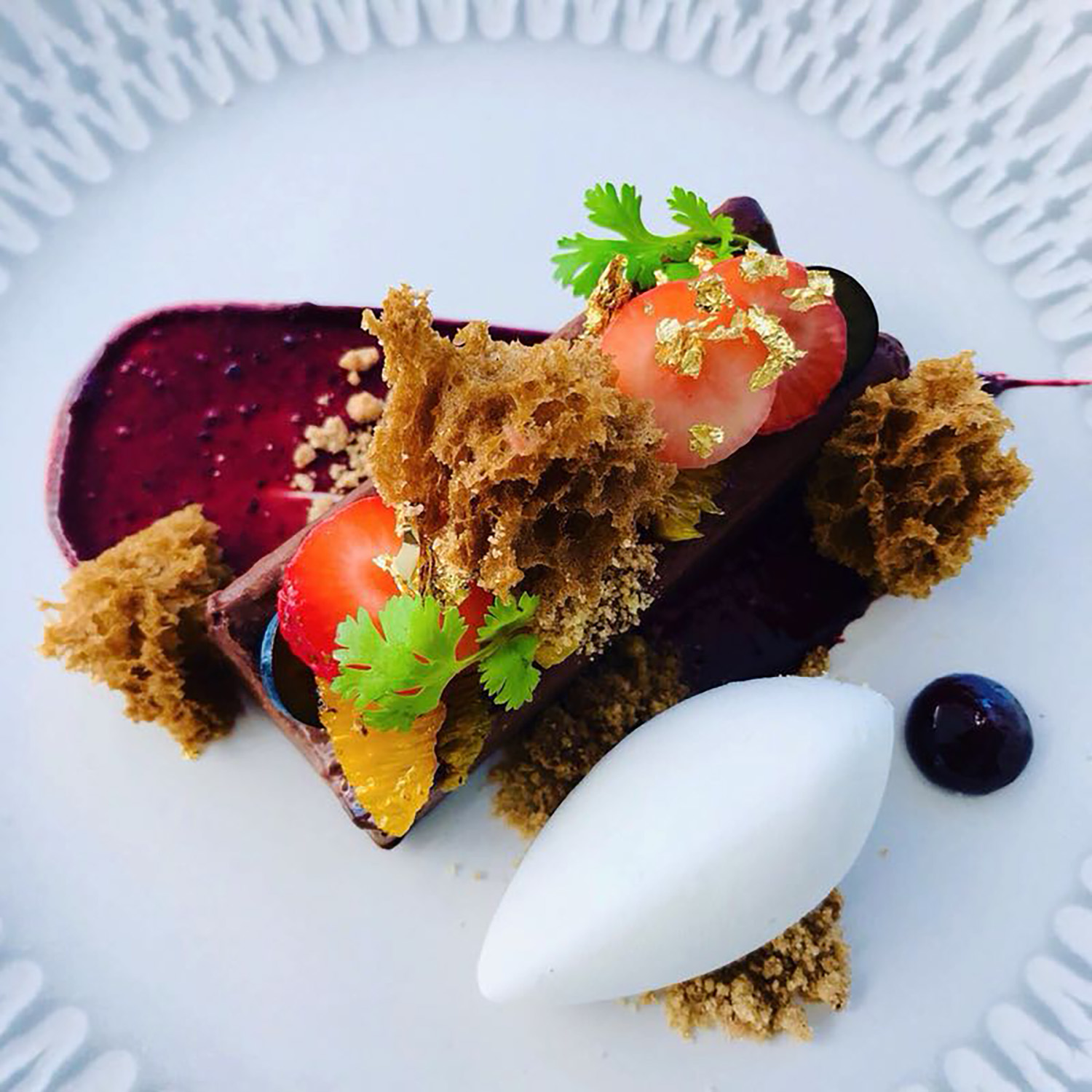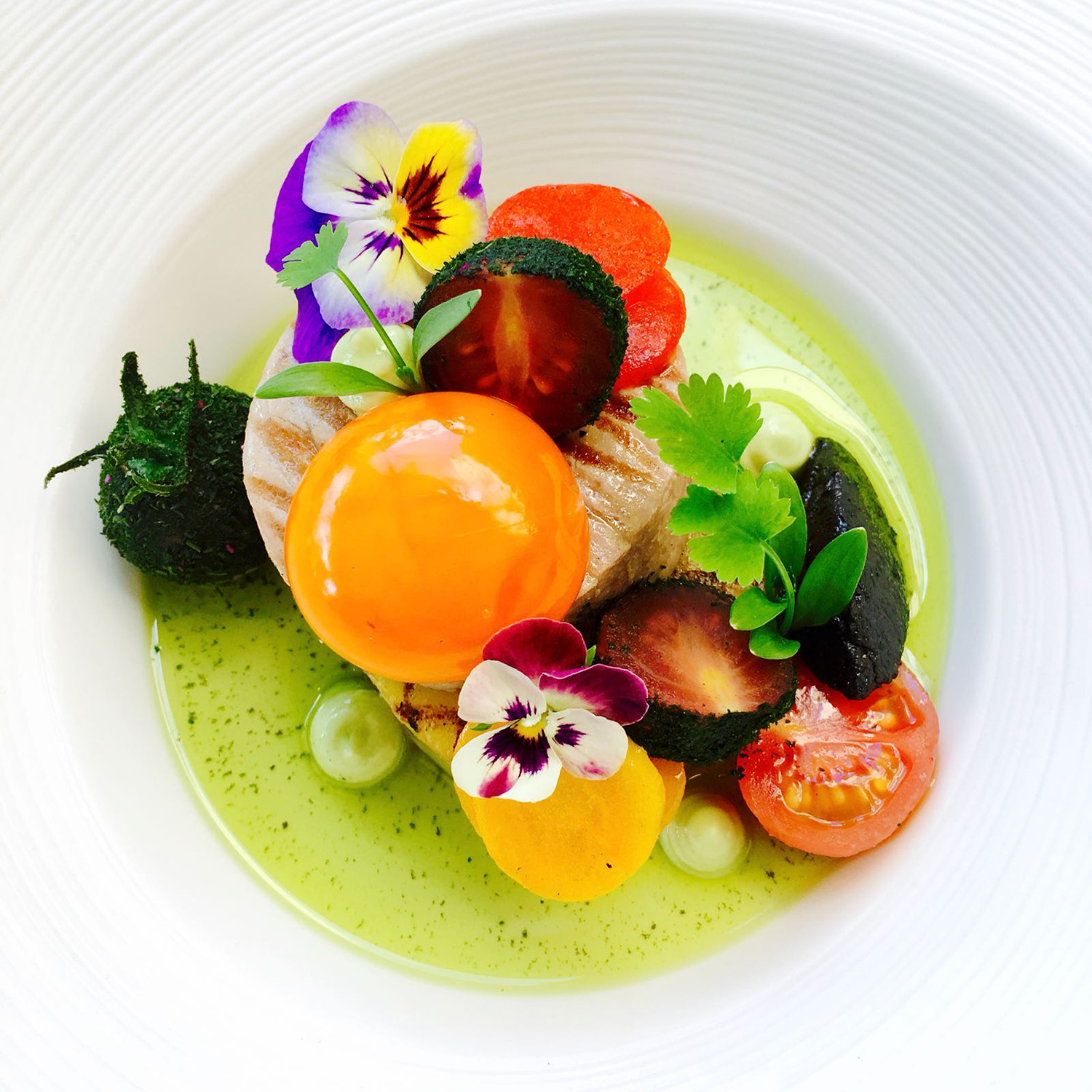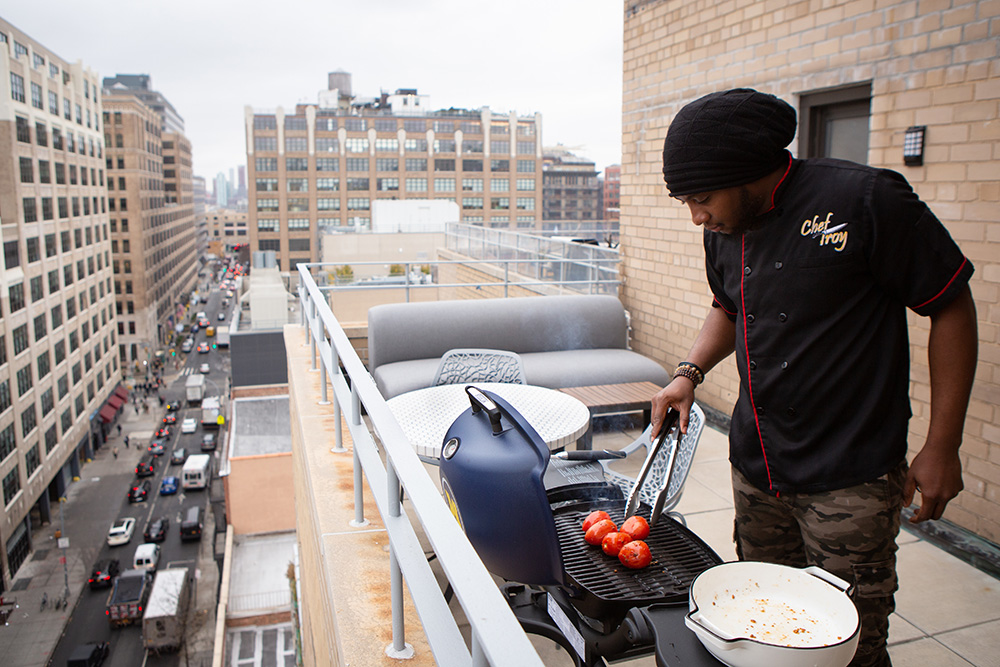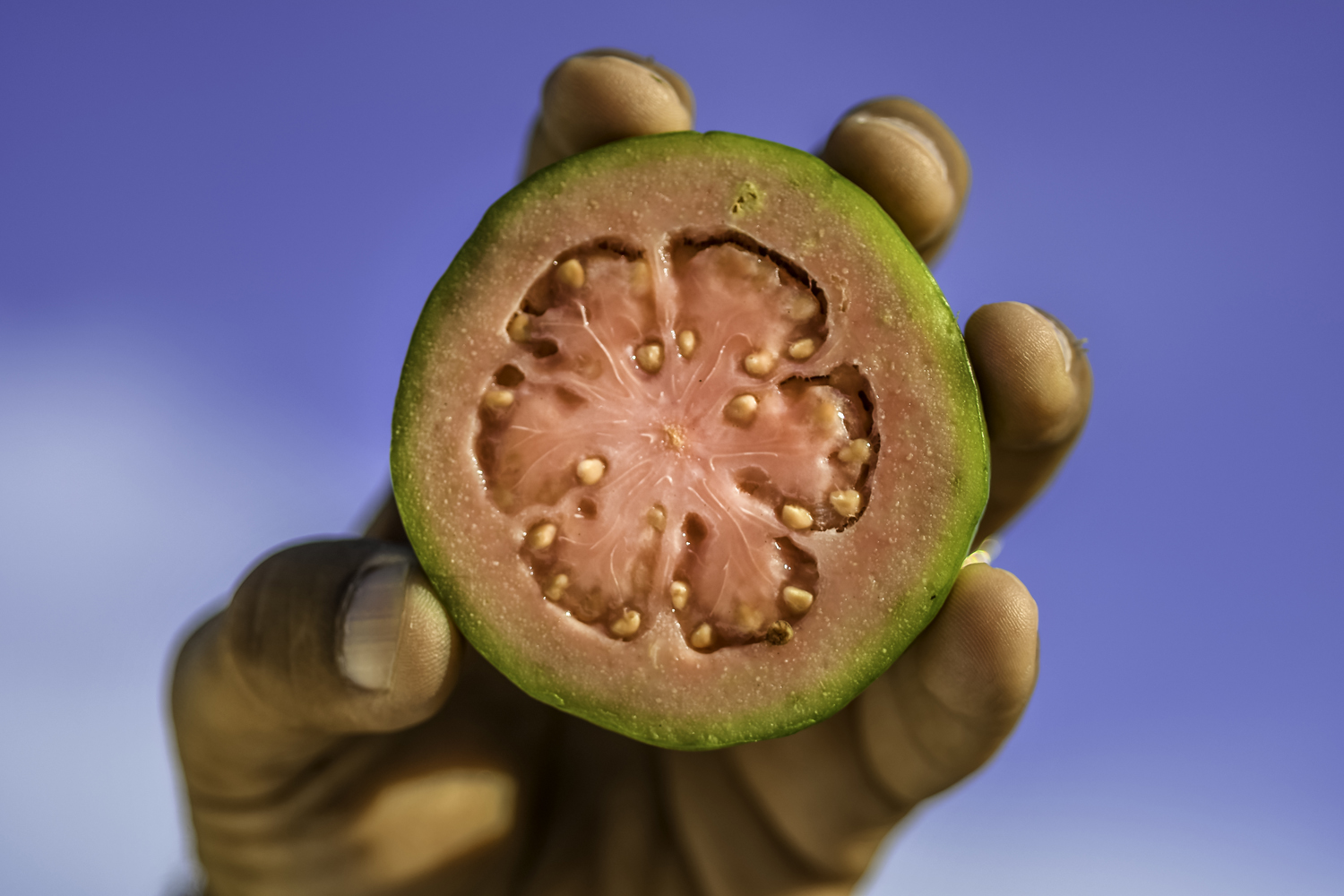The Rebirth of Caribbean Cuisine
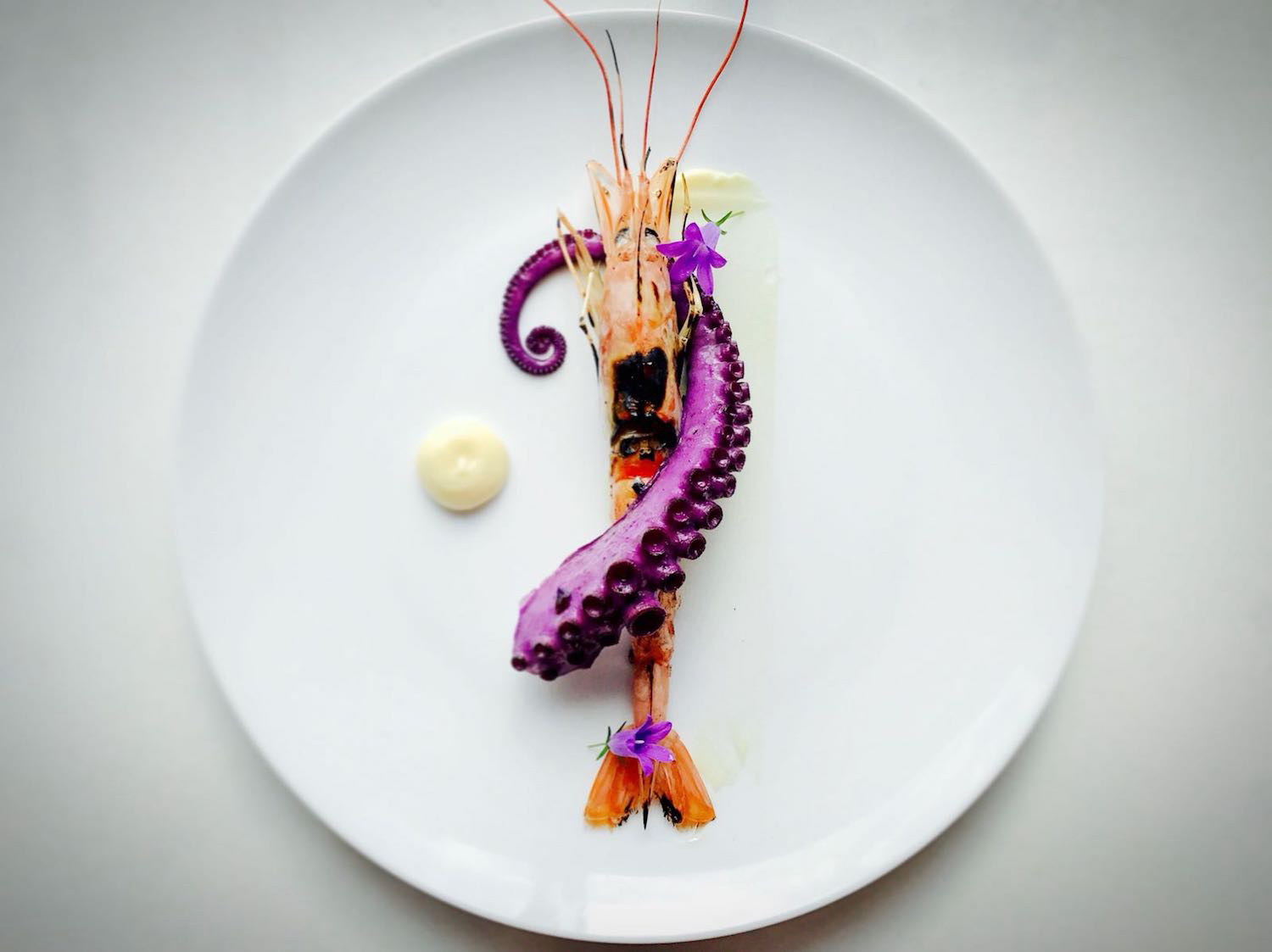
Jason Howard refused to believe that
‘Caribbean food had nothing going for it.’
So he left his job as a sous chef at a Michelin-starred
restaurant to help transform the region’s cuisine.
The octopus is drawn from a vat of electric purple brine. One tendril – stained with flavors of red onions, red wine vinegar and cloves – is delicately twined around a bright orange prawn.
“I'm trying to show people the imagery of Caribbean food,” said Jason Howard, the executive chef and visionary behind The Top Deck in Barbados.
With the discernment of an artist, he eyes the dish once more to see if the bay leaf and parsnip cream are laid just right. Approvingly, he sends it out the door.
This is Caribbean fine dining like few have ever seen.
The Visionary
Jason Howard, the executive chef of The Top Deck restaurant in Barbados, aims to have the first Caribbean restaurant awarded a Michelin star. Photography by Nigel Wallace/IslandandSpice.com
In 2014, Mr. Howard was working as a sous chef at Hélène Darroze, a Michelin-star restaurant in London. While there, he shared with his colleagues how he wanted to make Caribbean food that could rival the French elite. One of the chefs laughed, another mentioned that Caribbean food had nothing going for it.
Determined to prove them wrong, he submitted his resignation. Within weeks he began a series of fine-dining Caribbean pop ups. He would go on to hold 15 events around London, all of them sold out. He knew he was on to something big.
“I think Caribbean food can evolve just like French food has evolved and Japanese food has evolved,” said Mr. Howard, who commutes between Barbados and London. The vibrancy of his island home serves as the main inspiration for his food.
“When I look at Caribbean food, I see Carnival,” he said referring to the annual masquerade celebrations that take place throughout the region. “Like a costume, all the distinct sequences, all of the shapes, the colors.”
Take his signature purple – the result of his unique brining process. He creates the royal color by mixing the juice of red cabbage with red wine and spices. By soaking octopus or marlin in the purple brine, he injects both vibrancy and flavor.
He creates rays of light by melding yellow plantains with vanilla bean. He transforms a tuna Niçoise salad into a dazzling array of edible flowers plated with cherry tomatoes that have been halved and capped with parsley salt. His dishes dance.
Modern Caribbean Cuisine
More than just a splash of mango and a dash of spice, Mr. Howard’s modern approach to island cuisine involves bringing new techniques to native ingredients. For example, you won’t find black pepper in his pantry. He uses Scotch bonnet exclusively.
“It’s my spice for everything,” he said. The pepper, which is native to the Caribbean, is a sweeter version of the habanero. Its heat index can more than double the kick of a cayenne chili. Wielding the pepper’s potency requires skill and a bit of patience.
Mr. Howard captures the Scotch bonnet’s essence by using three techniques: steeping the pepper in oil, grinding it into a powder and blending it into a foam.
To craft Scotch bonnet oil, he places 10 peppers in about a quarter gallon of pomace oil. He removes the peppers after a week. What’s left is a heat-filled oil that can be used liberally and similarly to the way freshly ground black pepper is used.
“We as Caribbean people need to understand how to use Scotch bonnet properly,”
He grinds dehydrated peppers to create Scotch bonnet powder for seasoning meats – think of it like garlic powder. Be sure to handle this one carefully because the plumes of powder can easily get into the eyes. He also prepares a courser version as a Scotch bonnet salt.
By boiling and blending peppers with onions and garlic, he makes a Scotch bonnet foam. “You get the flavor, the amazing taste,” he said, “then it gets really hot and then it gets back to where it started.” The experience dances on the tongue for about five seconds.
“We as Caribbean people need to understand how to use Scotch bonnet properly,” he said, pointing to how the French have their own pepper, the espelette, and how the Japanese use wasabi.
“Everybody has their own pepper,” he said. “So why are we using everyone else's?”
While he is excited about the potential for modern Caribbean cuisine, it is currently a lonely path. Grab-and-go-spots that serve the standard protein with rice and vegetables seemingly dominate the island food space. He wants chefs to know there is a world beyond that.
“I’m here to show chefs how to get the most from our cuisine,” Mr. Howard said. “Like a raw diamond, it just needs to be cut and polished.”
The Top Deck By Jason Howard
Alleynes Bay, Holetown, Barbados BB1100 | +1 246-422-0359 | Website
The Top Deck by Jason Howard (left) overlooks the Caribbean Sea. Photographs by Nigel Wallace/IslandandSpice.com
Food photography provided by Jason Howard. At the top: a cured, torched prawn with octopus that has been torched and brined in the juice of red cabbage and finished with a Scotch bonnet oil. Also on the plate, bay leaf and parsnip cream. From left: a chocolate rum torte with marinated fruit, a coffee sponge and berry compote; a tuna Niçoise salad with cherry tomatoes that have been halved and capped with parsley salt.

